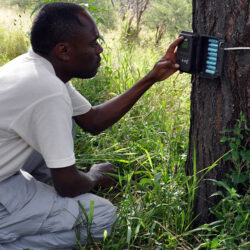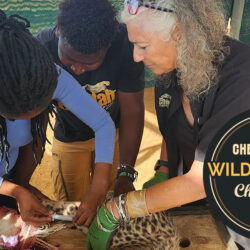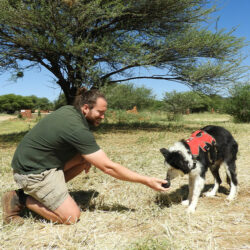Kenyan Cheetahs in Namibia: Genetic Analysis
-
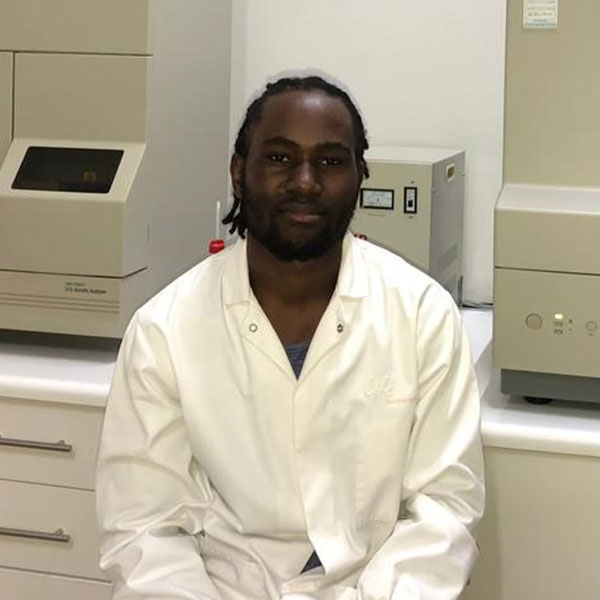
- by Hafeni Hamalwa February 10, 2021

Like they say a journey of a thousand miles starts with a single step! It was three years ago when I decided to further my study with a master’s degree in Biology with the University of Namibia after I completed my internship at Cheetah Conservation Fund in the genetics laboratory. As an intern at CCF, I got exposed to many research projects; some of these got my interest and I decided to further my study in one of them. The project that attracted my interested was focused on the Kenyan cheetah population. I got to learn more about cheetahs in Kenya while I was helping Brian, a Kenyan master student who came to our laboratory to do his genetics analysis.
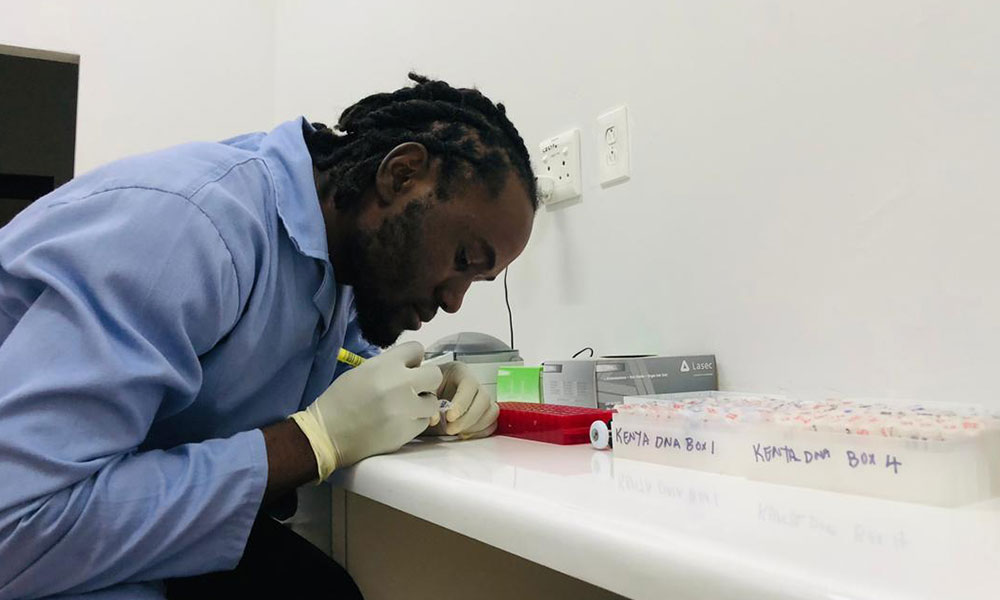

Kenyan cheetahs are of great interest; firstly, as very few studies have looked at their population structure. Secondly, Kenyan cheetahs used to be called Acinonyx jubatus raineyi, eastern African cheetah, but in 2017 they were merged with Acinonyx jubatus jubatus, the southern African cheetah subspecies, which is found here in Namibia and all the way to South Africa. Therefore, my study which I conducted in the CCF genetic laboratory aimed at looking closer at the subspecies found in Kenya based on mitochondrial haplotypes. A haplotype is a group of genetic variants that is inherited together from a single parent (like a string of beads where each coloured bead represents a variant).

The samples for my study were collected by our collaborators from the Mara Cheetah Project, the Action for Cheetah in Kenya, and the Kenyan Wildlife Services, who shipped them to CCF. The Kenyan MSc student, Brian, initiated the study by starting to identify individuals using microsatellite analysis, and I helped move the identification forward after he left. Now that we knew which sample belonged to who, I could ensure that the samples I used for my MSc study were of different individuals.
To find out the mitochondrial haplotype of the samples in my study, I used the Sanger sequencing technique which included laboratory activities such as amplification of DNA by a Polymerase Chain Reaction (PCR), sequencing reaction, and ‘running’ the samples on our genetic analyser. I performed all the laboratory activities in the CCF genetics laboratory. Once the sequences were obtained, I was able to look into the Kenyan cheetah subspecies.

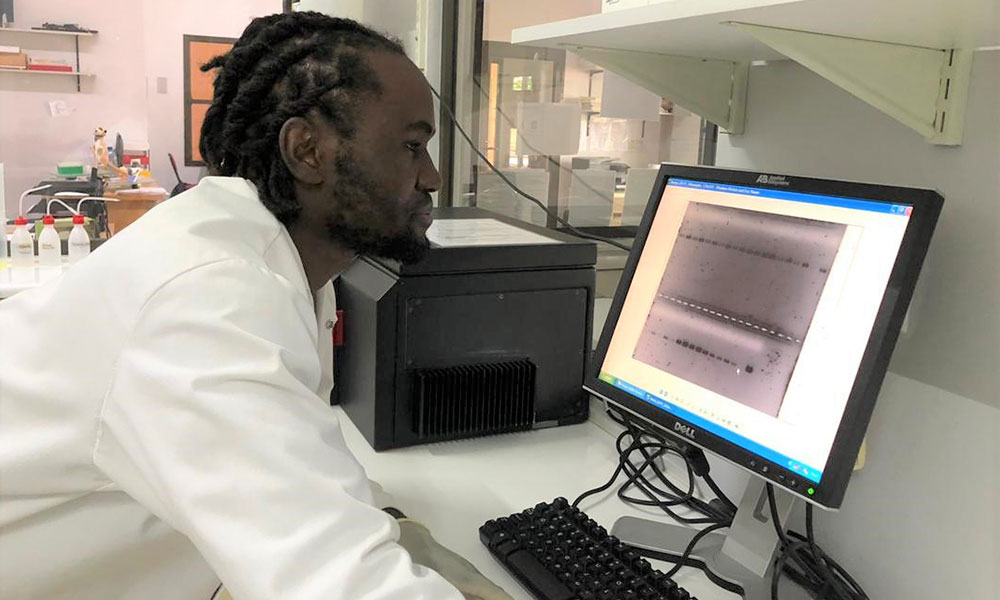
Toward the end of my master’s study, I was lucky enough to get awarded a grant by The Rufford Foundation which supported me to finalize my master’s thesis and to cover extended laboratory work to compare the Kenyan samples to samples from cheetahs that were rescued from the illegal wildlife trade in Somaliland. A very huge thank you to them. Their support for conservation and our efforts to save the cheetah are highly appreciated.

Of course, none of this work could have been possible if it wasn’t for my supervisor’s support and the whole community of CCF, especially the genetics team. Not only have I obtained a master’s degree, but I have also grown as an individual and professionally. During my time at CCF I have made lifetime friends and got exposed to other aspects of wildlife conservation which strengthened my passion for cheetahs.
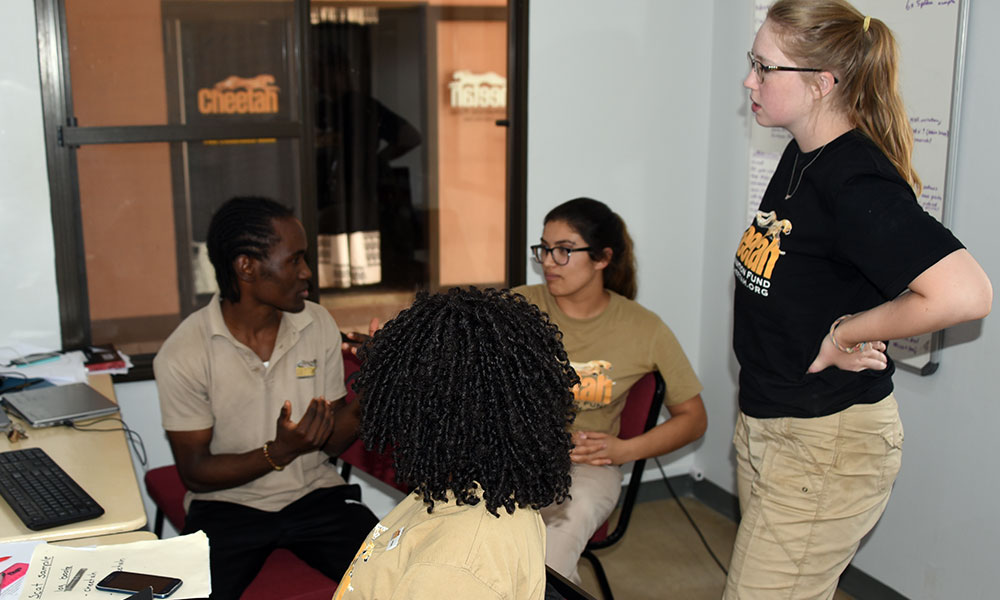
Genetic research is fundamental to species conservation. Cheetahs have low genetic diversity, which limits their ability to adapt to their environment and reproduce. It also affects their overall health. This means they are at high risk of extinction, especially when coupled with habitat loss, competition from other predators, human-wildlife conflict, and the impact of the illegal wildlife trade. By analysing genetic samples – DNA – we can understand more about the threats to the species and develop solutions to tackle them.
Related Reading
-
May 29, 2024
CCF’s Chief Ecologist and Forest Steward Earns PhD -
July 1, 2023
Chewbaaka’s Wild Cheetah Challenge – 2023 -
March 6, 2023
Finn, CCF’s First Scat Detection Dog, Turns 16!

